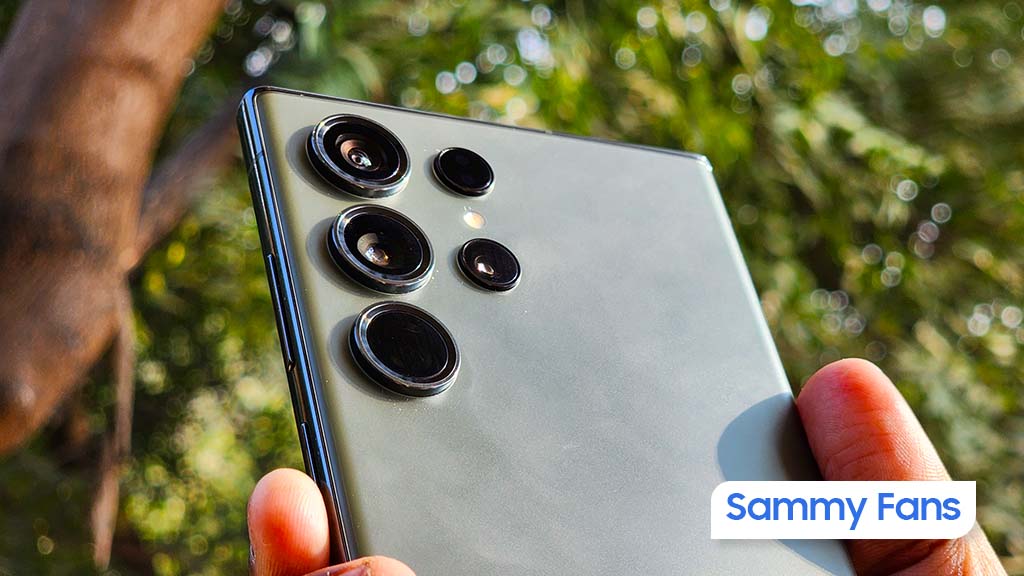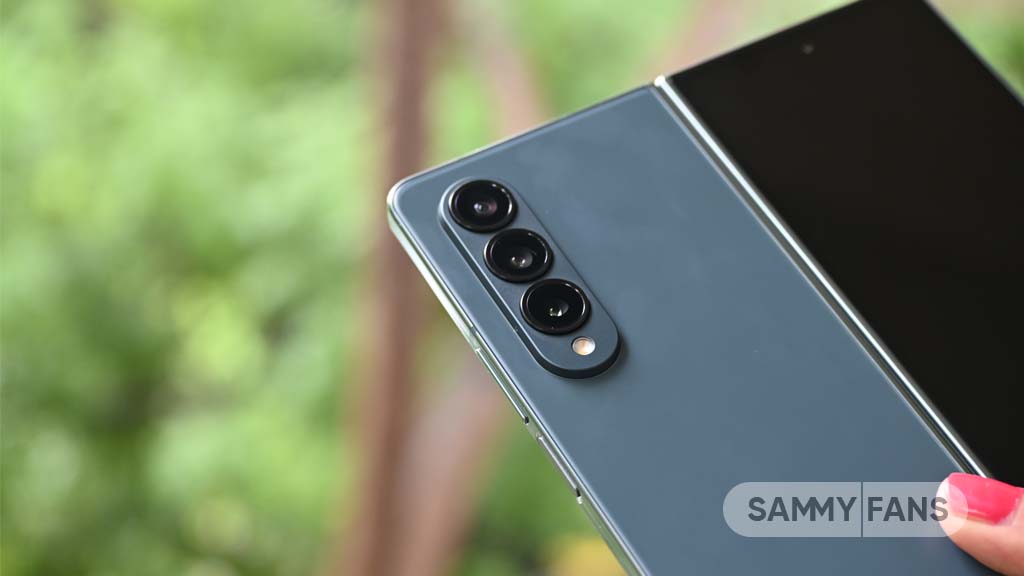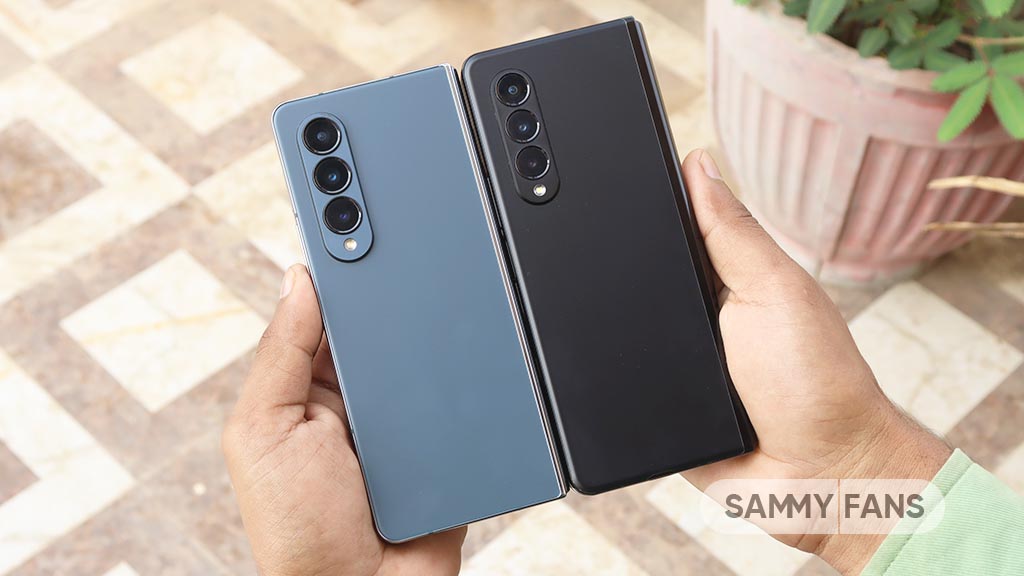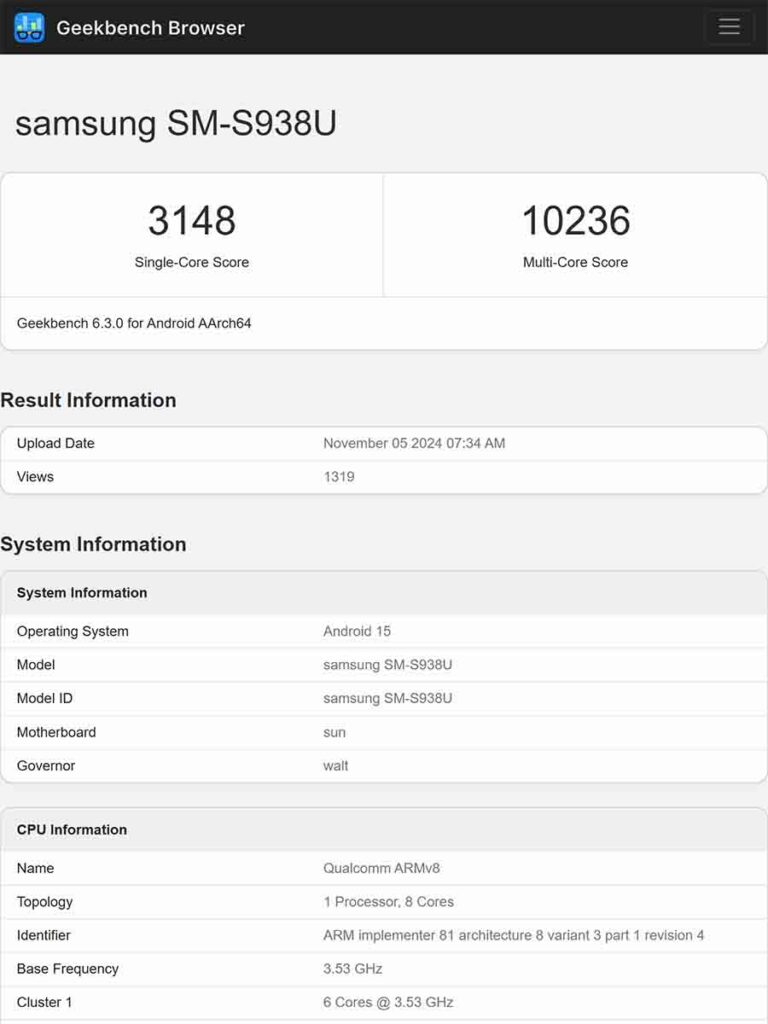Samsung
Stable One UI 6.0 (Android 14) update released for these Samsung devices

Millions of Samsung consumers are eligible for the One UI 6.0 update. Before the October end, Samsung started to release the Stable Android 14-based One UI 6.0 to the Galaxy S23 series devices. The expansion will continue along with new Galaxy devices in the update party.
Back in August, the South Korean tech giant started its Android 14 Beta Program, which took about two months to transform into Stable One UI 6.0 update. Notably, various Galaxy devices (mid-range and flagships) were able to test Android 14 through the One UI 6 in certain markets.
Follow our socials → Google News | Telegram | X/Twitter | Facebook | WhatsApp
Samsung will continue to distribute the Stable One UI 6.0 update to eligible Galaxy devices globally. Months ago, we compiled a list of Galaxies eligible for the Beta and Stable update. Similarly, we are now keeping track of Stable build’s availability for Galaxy devices.
Stable One UI 6.0 (Android 14) update released for these devices
Galaxy S series
- Galaxy S23, Galaxy S23+, Galaxy S23 Ultra [One UI 6.1 Testing]
- Galaxy S22, Galaxy S22+, Galaxy S22 Ultra
- Galaxy S21, Galaxy S21+, Galaxy S21 Ultra
- Galaxy S23 FE
- Galaxy S21 FE
Galaxy Z series
- Galaxy Z Fold 5
- Galaxy Z Flip 5
- Galaxy Z Fold 4
- Galaxy Z Flip 4
- Galaxy Z Fold 3
- Galaxy Z Flip 3
Galaxy A series
- Galaxy A05s
- Galaxy A54
- Galaxy A34
- Galaxy A24
- Galaxy A14
- Galaxy A04e
- Galaxy A73
- Galaxy A53
- Galaxy A33
- Galaxy A23
- Galaxy A23 5G
- Galaxy A13
- Galaxy A72
- Galaxy A52
- Galaxy A52 5G
- Galaxy A52s
Galaxy M series
- Galaxy M54
- Galaxy M34
- Galaxy M14
- Galaxy M53
- Galaxy M33
- Galaxy M23
- Galaxy M13
Galaxy Tab series
- Galaxy Tab S9/S9+/S9 Ultra
- Galaxy Tab S9 FE/S9 FE+
- Galaxy Tab S8/S8+/S8 Ultra
- Galaxy Tab Active 4 Pro
- Galaxy Tab S6 Lite 2022
Galaxy F series
- Galaxy F54
- Galaxy F34
- Galaxy F14
- Galaxy F23
- Galaxy F13
Note: Availability varies by region and carrier.
Top features and changes of One UI 6.0
- Redesigned Quick Settings and Notifications panel.
- New lockscreen customizations.
- New font and simpler icon labels.
- Tweaks in the Camera app.
- Modes are directly tied to the lock screen.
- Bixby Text Call now supports more languages.
- New Weather and Camera widgets.
- Richer data in the Weather app.
- New emoji style in Samsung Keyboard.
- Multitasking improvements in the Gallery app.
- New Auto Blocker feature (blocks app installation from unauthorized app stores).
- You can check the complete changelog here.
Samsung
Samsung unveils futuristic ALoP telephoto zoom camera technology

Samsung launched ALoP (All Lenses on Prism) telephoto camera technology. The next-gen camera will replace the conventional folded zoom telephoto in the future. The company will showcase ALoP tech at CES 2025 in January.
All Lenses on Prism
Samsung’s new All Lenses on Prism telephoto places the lenses directly on the prism rather than in between the prism and sensor. It’s a different approach as compared to the conventional telephoto/periscope camera sensors.

The new structure of ALoP offers improved brightness and reduced noise. Not that all, but it also decreases the module shoulder height and length. That said, flagship camera modules will go even more sleeker and offer more aesthetic design.

How it would benefit your future Galaxy?
Samsung says that the new ALoP positions the telephoto lens flat, in the plane of the phone. This way, smartphone makers can create a smaller and less pronounced camera bump as well as provide a circular lens appearance.
Compared to the folded zoom, the ALoP camera will bring a brighter and more compact telephoto module. End users will benefit from significantly clear and low-noise nighttime images – all without a thick and monstrous camera bump.

The Galaxy S25 Ultra is unlikely to feature an ALoP camera. Currently, Samsung has just unveiled the next-generation zoom telephoto technology. It’s up to MX Division when the ALoP telephoto will be in a Galaxy smartphone.
ALoP Features
Brightness. Featuring an f/2.58 lens aperture at a focal length of 80mm, ALoP manages to use a large aperture lens that promises low-noise portrait images in night shots.
Compact size. Smartphones using ALoP can shorten the camera module length by 22%. The ALoP takes up an especially low module height because it employs a 40˚-tilted prism reflection surface and 10˚-tilted sensor assembly.
Aesthetics and ergonomics. Samsung flagships still feature an elegant camera module. The company debuted a new 50MP periscope solution with S24 Ultra last year. The same sensor is expected to be applied to the Galaxy S25 Ultra next year.
Meanwhile, the periscope displays a rectangular prism that is cosmetically somewhat jarring to an otherwise sleek camera appearance. If a future Galaxy flagship adopts ALoP, users see only the expected circular lens shapes.
Samsung
A tech lover’s journey with the Samsung Galaxy Z Fold4: A tale of disappointment

I have been a huge fan of technology, always eager to explore the latest electronic gadgets including smartphones, headphones, laptops, and several others. I have owned the Samsung Galaxy Z Fold4 5G for two years now, using it as my secondary phone for the last year.
I have always treated it carefully, so you can imagine my situation when I noticed a small black dot on the inner screen of the fold. It wasn’t long before the entire inner display stopped working, while at the same time, the outside screen remained just fine.
This has been quite a setback for me, particularly because I paid over $2000. You expect something that expensive to last, right? But here I am, with a phone where the main feature—the folding screen—is dead. Samsung wants around $650 to fix it, which seems a lot, especially since the phone itself is now only worth around $800-900 if I go for the trade-in. This questions how well these expensive foldable phones hold their value over time.
What’s even more frustrating is not knowing why the screen failed. After using various Samsung foldable phones over the years, this issue makes me think twice about the reliability of the foldable. It’s not just about my experience; it’s a concern for anyone interested in foldable technology.
I am highlighting a difference between Samsung’s marketing narrative, where the company positions itself as a leader in innovation and customer service and the experience with its products. The failure of the Samsung Galaxy Z Fold4’s inner display questions whether Samsung truly stands by its products when the product faces issues.
By sharing my experience here, I want to inform other buyers like me about the potential pitfalls of purchasing such high-end tech. I also want to influence Samsung to reconsider its approach to customer service and product reliability by bringing attention to these issues.

Despite being excited about the concept of foldable phones, especially the easy multitasking feature (my favorite), this negative experience has led to hesitation (or doubt in my case) about future purchases.
I hope Samsung will recognize these customer experiences and attempt to address such issues, either through improved product design, enhanced customer support, or more transparent communication about product limitations or potential issues.
These sudden breakdowns are damaging Samsung’s foldable phones’ reputation and might make potential buyers think twice before getting one.
Disclaimer
I have reviewed all Samsung Galaxy Z Fold and Flip devices launched to date. I will share more information on my X account. You can connect me there.
Samsung
Samsung Galaxy S25 Ultra vs S24 Ultra: Performance Comparison

Samsung Galaxy flagship phones are performance-focused, especially the Ultra model, next year, S25 Ultra will fill this role with the new Snapdragon 8 Elite processor. In the meantime, we’re getting closer to the launch event and now, we have an early Geekbench result to observe a few performance aspects of this upcoming device.
Flagship phones offer plenty of features, upgrades, and improved software. All of these rely on the chipset to make things work. Each year Qualcomm adds new process technology and core architecture to boost performance.
Samsung has been using a dual-chipset architecture (Exynos+Snapdragon) for years. But Exynos’ past failure in a bug-free experience has led to an outcast from flagship devices. Therefore, the company is now relying on Snapdragon chipsets.
Performance is a crucial selling point and also important to compete against Apple and Chinese Android rivals. The new flagship must also bring significance over its predecessor to give customers some reasons to upgrade from their existing devices.
To anticipate this story, we’ll compare the early Galaxy S25 Ultra Geekbench score against the Galaxy S24 Ultra. Both of these scores will be early benchmarks and not after-launch scores.
Before we move ahead, let’s take a quick look at the single and multi-core.
1. Single Core – It is used for tasks that rely on a single thread of execution such as web browsing, video streaming, and running low-resource consuming apps.
2. Multi Core – All processor cores work together to launch and run high-resource-consuming apps or system programs such as gaming, video editing, and app multitasking.
Galaxy S24 Ultra – Snapdragon 8 Gen 3
The S24U equipped SD 8 Gen 3 chipset is built with TSMC’s enhanced 4nm technology, which is the same as the past two chipsets. It offers up to 30% CPU performance increase and up to 20% power efficiency.
Its single large core goes up to 3.3GHz and the new generation of Adreno GPU has 25% improved graphics and power efficiency.
This phone on Geekbench recorded 2234 points for single core and 6807 points for multi-core. The benchmark recorded four core clusters
- 2 Cores clocked at 2.27 GHz
- 2 Cores clocked at 2.96 GHz
- 3 Cores clocked at 3.15 GHz
- 1 Core clocked at 3.30 GHz

Samsung Galaxy S24 Ultra Geekbench Performance Score with Snapdragon 8 Gen 3 chipset (Source – Geekbench)
Galaxy S25 Ultra – Snapdragon 8 Elite
This new chipset uses TSMC’s 3nm process technology with 2nd generation Oryon CPU. The CPU has 4.32 GHz max speed, 45% improved performance, and 44% power efficiency compared to Gen 3. Its new Adreno GPU uses sliced architecture with 40% more graphical performance and efficiency.
The Galaxy S25 Ultra on Geekbench achieved 3148 points for single core and 10236 points for multi-core. The chipset has two core clusters:
- 6 Cores clocked at 3.53 GHz
- 2 Cores clocked at 4.47 GHz

Samsung Galaxy S25 Ultra Geekbench Performance Score with Snapdragon 8 Elite chipset (Source – Geekbench)
Difference:
The new chipset scored far more than the Gen 3. That sums up a 31+ percent increase in single-core and a 30+ percent increase in multi-core performance.
That’s a big difference and we can give the credit to the new CPU core and the 3nm processing technology for this performance upgrade.
iPhone 16 Pro Max
Samsung Galaxy S25 Ultra will compete against iPhone 16 Pro Max, the latest top-end phone from Apple’s campaign. This features the new A18 Pro chipset processed with second-gen 3nm process technology. Similar to Snapdragon, this chip also focuses on AI and extensive task handling.
These are the Geekbench score for the iPhone 16 Pro Max:
- 3409 points on single-core
- 8492 points on multi-core
The iPhone’s single-core performance is dominant over the Galaxy S25 Ultra. However, the Samsung flagship flips the situation in multi-core with big numbers.
The difference between the two devices comes as the following:
- Apple is 261 points (7.96%) better in Single Core performance
- Samsung is 1744 points (18.62%) better in Multi Core performance
That means, Samsung could provide faster and more efficient performance with the SD 8 Elite chipset in multi-core including all resource-intensive applications. Also, single-core results should not be a big problem in providing a superior user experience.
Unreleased devices
The Geekbench results for Galaxy S24 Ultra and S25 Ultra are recorded prior to their final release. However, it’s noted that the S24 Ultra score didn’t change much after launch. So, we can expect, the S25 Ultra to maintain this Geekbench score even after launch but we’ll have to see what happens.
Conclusion
This comparison for Samsung Galaxy S25 Ultra shows that Snapdragon 8 Elite has achieved a new milestone in performance compared to the 8 Gen 3. Not only that, the phone will also collide with the iPhone 16 Pro Max with new capabilities. Hence, the S25 Ultra will be an exciting flagship to tune in. Read more about this upcoming smartphone in our archive.












